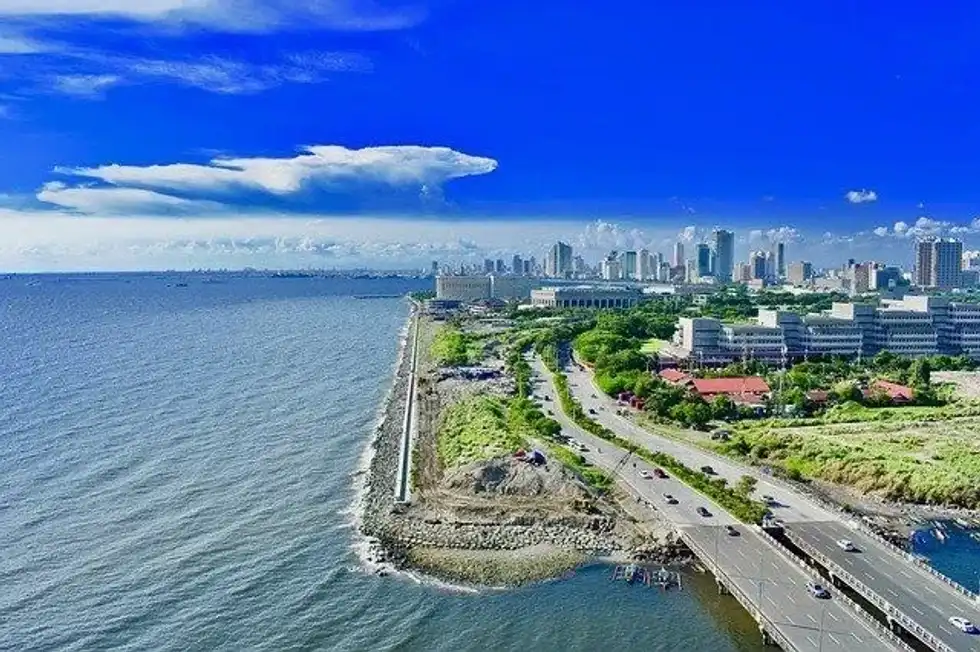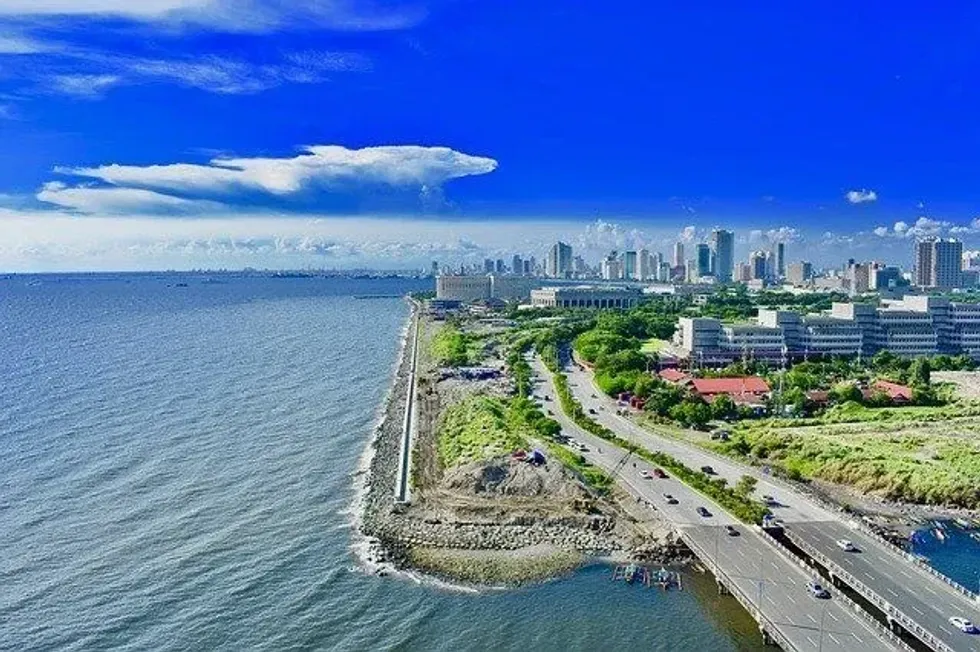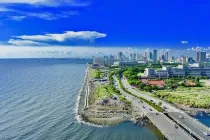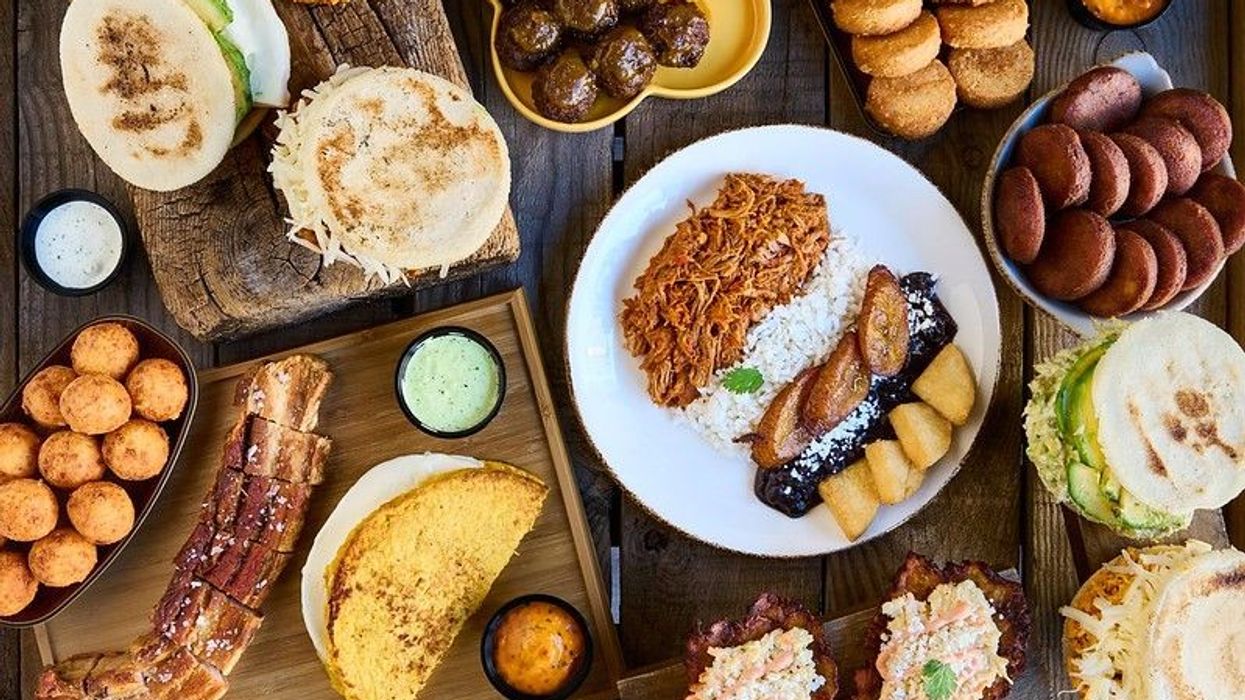Perplexing Philippines Facts That Will Make You Pack Your Bags

The Philippines is a super attractive location and is the second-largest archipelago globally.
The Philippines is home to one of the longest underground rivers globally, in St. Paul's Mountain Range. It stretches over 5.1 mi (8.2 km) and is above sea level.
The Philippines' national symbol is their national bird, the Philippine eagle. This bird is also called the incredible monkey-eating eagle.
In the Philippines, they speak over 120-187 languages, but the official languages are Tagalog and English. The government uses both these official languages, but English is more commonly used. Locals use Filipino or Tagalog for formal education. Tagalog is crowned as the national language of the Philippines. The official sign language of this country is Filipino Sign Language.
The South China Sea bounds the country to the west, and to the east, it is the Philippine Sea. Likewise, to the southwest, it is the Celebes Sea. Let's discover some more interesting Philippines facts.
The Philippines' Economy
The Philippines was counted under the most dynamic economies in the East Asia Pacific region. During 2000-2009, the average annual growth was 4.5%.
This has increased to 6.4% during 2010-2019. With the growing middle-class population, increase in urbanization, and the young and large population of Filipino, the country's economy is rooted in strong consumer demand. Additionally, this largest island is supported by a vibrant, robust remittance and labor market.
Philippines facts claim that there has been a decline in its Gini coefficient and poverty rates. In 2018, the Gini coefficient came down to 42.7 from 44.9, and the poverty rate declined to 16.6% in 2018 from 23.3% in 2015.
But the pandemic and quarantine measures have impacted the Philippines' poverty reduction and economic growth. However, as per the Philippine government, this country is on the path to recovery after deep contraction.
The Philippines' economy is forecasted to grow by 4.7% in 2021, 5.9% in 2022, and 6% in 2023. The local government of the Philippines has played a crucial role in helping the needy during the pandemic.
Another fact about the Philippines is the Spanish rule that created the first unified political structure. It saw the introduction of Christianity, the oldest modern university in Asia, and the code of law.
In 1898, Spanish rule ended with Spain's defeat in the Spanish-American War. Later, World War I gave the country a chance to pledge assistance to the United States' war effort, but World War II has left the entire country damaged and demoralized.
Tourist Attractions In the Philippines
Before packing your bags and exploring the country, tourists want to know about some attractive locations. Visitors can explore several beautiful places, from visiting marvelous natural wonders and Philippine islands to an interesting Spanish colony, knowing Spanish ancestry, and historic sites.
This country is a tropical paradise in the Pacific Ocean, featuring beautiful landscapes, rice terraces, and mesmerizing beaches. Some of these locations are:
Tubbataha Reef: Tubbataha Reef is a well-known marine sanctuary in the Sulu Sea in the Philippines. This location is safeguarded as Tubbataha Reef National Marine Park.
It comprises two atolls, South Atoll and North Atoll, and these atolls are separated by a deep channel of almost 5 miles (8 km) wide. Because of coral walls, this location has become a popular dive site where the shallow reef ends abruptly.
It is open to tourists when the waves are calm from April to June. Cebu City is where maximum selfies were taken as recognized by Time Magazine; the place ranked ninth.
Iloilo City and Quezon City follow suit. The residents of the Philippines are tech-savvy, and they love to make their presence felt online.
Taal Lake and volcano: In the Philippines, Taal Volcano on Luzon Island is the most active. It is located in the center of the lake and the city of Talisay. You can ride a boat to the crater.
It is an hour's ride from Manila's capital city to reach the location. Several trails are also around the volcano, while the Spanish Trail goes to the top. Kenny Trail is the least popular one avoided by many.
Puerto Princesa Underground River tour: Your trip to the country is incomplete without taking an underground river tour. Take a tour of the Palawan Sea and enjoy some awe-inspiring views. This site has also got recognition by UNESCO World Heritage. While on the ride, you can experience the five-mile river, an intricate cave system with vertical cliffs.
Hanging Coffins, Sagada: Sagada is located in the northern Cordillera Mountains, and this trek will get you up to Hanging Coffins. They are centuries old and are suspended from the Echo Valley cliffs.
Reaching this mountainous region needs physical endurance and time as narrow and steep paths cover the area. This place looks like an edited picture, and the view is like a reward to your eyes.
Boracay: Boracay is considered the beach capital of the country as more than a dozen beaches are present here. It is a tiny island located in the west Visayas region. On the island's west side, there is White Beach. Puka Shell Beach is on the tip, and at the north end is the Diniwid beach.
San Agustin Church, Manila: San Agustin Church is situated in Manila and was constructed in 1589. This beautiful church is famous because it has survived two fires and seven earthquakes over centuries.
Also, it remains the oldest stone church in the country, and you can see the Philippine eagle here. You can also see exquisite carvings on the doors at the main entrance.
As you go inside, you can enjoy a Mexican-influenced interior presented in the shape of a Latin cross. The paintings on the gorgeous ceiling were created by Italian artists Cesare Alberoni and Giovanni Di Bella in the 1800s.
Mayon Volcano: This volcano rises over 8,000 ft (2,438 m) above sea level and is a symmetrical cone shape. Here visitors can enjoy several activities, like climbing, camping, bird watching, hiking, and photography.
In the Philippines, this volcano has erupted 49 times in 400 years and is the most active volcano to date. On February 1, 1814, the most destructive eruption happened in the Philippines' history, bombarding the nearby cities and towns with volcanic rocks.
Chocolate Hills: Chocolate Hills are the top tourist attraction in the Philippines, comprising 1,268 individual mounds. They are scattered across the interior of Bohol Island.
They are almost similar in size and look symmetric, ranging from 98-164 ft (29.9-50 m), covered in green grass. As the dry season starts approaching, this grass turns brown, which is why it gets the name 'Chocolate Hills.' There is another theory behind the name, and it is the formation of weathered rock.
Donsol: In the Philippines, Donsol is a sleepy fishing village, and it is in the province of Sorsogon, with stunning waterfalls, pristine beaches, and unexplored caves. You can see big whale sharks between November and June in this location.
But more number of ocean's gentle giants rise from February to May. Visitors can also take a boat cruise through the palm and mangrove trees.
They can also explore the night light with millions of sparkling fireflies. To spend a cozy night with their loved ones in the Philippines, they can enjoy a tasty dinner after shrimp catching expedition with nets and bamboos.
Banaue Rice Terraces: In the Philippines, Banaue Rice Terraces is another attractive location carved from the mountain ranges. These terraces were formed over 2,000 years ago, and no modern tool was used in the making.
Magnificent farms resemble terraces where locals plant vegetables and rice shrubs. However, the younger generation does not find farming as appealing as the older generation.
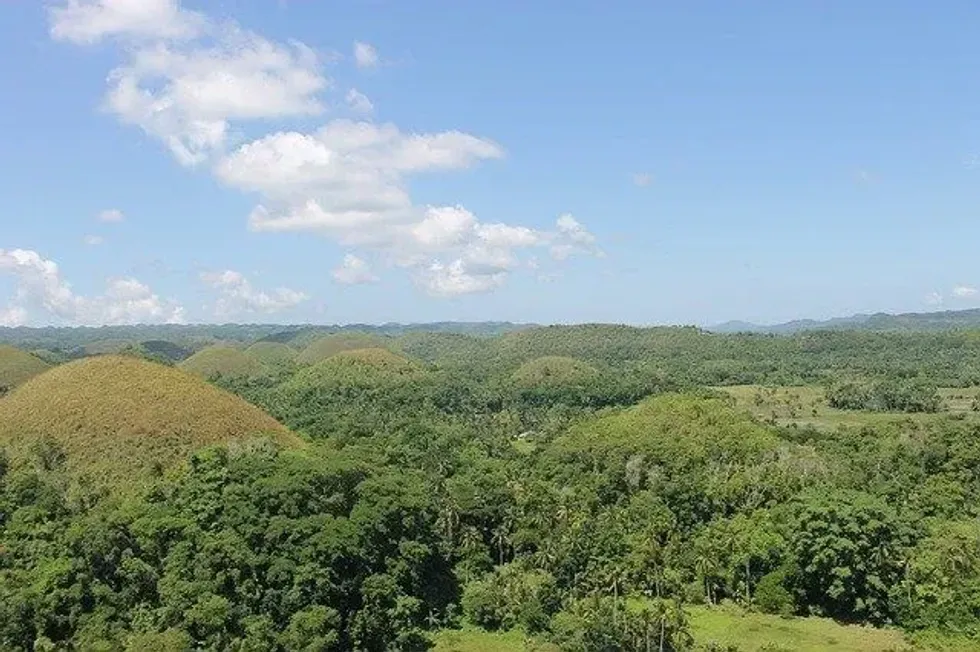
Flora And Fauna In The Philippines
Irrespective of when you plan to visit the Philippines, the unique flora and fauna will always mesmerize you. You will find that there is diversity in their flora and fauna, and over 52,177 species call this place their home.
The months of November to May are part of the dry season in this country, whereas January is considered the coldest month. Before preparing for a vacation to the Philippines, you should know about flora and fauna.
The Philippines has a varied and rich flora surrounding the close botanical connections to Indonesia. Forests occupy about one-half of the land area, and it comprises primarily tropical forests.
Dipterocarpaceae is the dominant family and represents around 75% of the entire forest. Several other creatures are also coming across in the Philippine Sea or the Pacific Ocean. You can see epiphytes, vines, and climbers.
Open grasslands are around 8 ft (2.43 m) tall and spread over one-fourth of the land in the Philippines. They also comprise the aftermath of slash-and-burn agricultural systems, artificial structures, and tropical savannah grasses.
The diverse flora of the Philippines has over 1,000 varieties of ferns, 8,000 species of flowering plants, and more than 800 orchid species. The most common mammals often seen in the Philippines are deer, wild hog, civet cat, wild carabao, monkey, and various rodents.
Over 196 bird breeds are there, among which the common ones are button quail, megapodes, peacock pheasant, button quail, pigeon, jungle fowl, hornbill, and parrot. Over 190 species of reptiles are there, which include large snakes and crocodiles, among others.
Philippines' Culture
The culture of the Philippines is something that makes this country different from the entire world. During catastrophes and calamities, the Filipino population always tried to rise irrespective of their challenges. They have always picked themselves up with a smile on their face.
You will come across pictures of religious sculptures and crosses at every corner of Filipino houses. They prefer to visit the church on Sundays, or twice or thrice a week whenever possible. The Filipino population prioritizes their families. It means irrespective of whether you are from the third or fourth generation, you will receive the same treatment.
When a Filipino baby enters the world, they are taught to be respectful through simple words like opo or po. They are taught how to treat elders, and as a sign of respect, the residents of the Philippines raise their hands to their foreheads.
Every Filipino person is taught to be helpful without expecting anything in return. These teachings imparted to Filipino children have helped them successfully shoulder responsibilities and perform all tasks efficiently. At times, this spirit is also referred to as community spirit.
Every Filipino values their culture and tradition. They set aside specific days to celebrate reunions, festivals, and birthday parties. Additionally, every event is celebrated uniquely where they can enjoy sumptuous food. They also love to hold fiestas and celebrations. Marinduque has their Moriones Festival, Davao has Kadayawan and Bacolod has MassKara Festival.
Filipinos celebrate the longest Christmas ever in Philippine history. As early as August, you can hear the songs and jingles of Christmas being played in restaurants and malls in the country. It creates a festive mood keeping everyone in good spirits and shopping for their loved ones. Christmas celebrations last till the second or third week of January.
Filipinos love music, and they even sing at different events. That's why even karaoke has become extremely popular, and they love to sing and spend quality time with their friends and families.
Now you can pack your bags and prepare for your Philippines tour. The Philippines is a perfect location with a wide variety of flora and fauna for you to enjoy your vacation with your family.
FAQs
Q: What are five interesting facts about the Philippines?
A: The five interesting Philippines facts are:
The Philippines ranks second in the world of exporters and producers of coconuts.
Philippines facts also say that the nation's capital is Manila.
Quezon City is the largest one, and it lies within Metro Manila.
Cebuano is another language that the residents of the Philippines speak.
The country is officially known by another name, the Republic of the Philippines.
Q: What countries border the Philippines?
A: The Philippines shares maritime borders with Japan to the northwest, Taiwan to the north, Indonesia to the south, Palau to the southeast and east, Brunei and Malaysia to the Southwest, China to the northwest, and Vietnam to the west.
Q: Is the Philippines an archipelago?
A: Yes, the Philippines is the second-largest archipelago.
Q: Where is the Philippines in Asia?
A: The Philippines is located in southeast Asia.
Q: Where exactly is the Philippines located?
A: This Southeast Asian country is on the eastern side of the Asiatic Mediterranean.
Q: What is the total area of the Philippines?
A: This country covers an area of 120,000 sq mi (310,798.6 sq km).
Q: How many islands in the Philippines are inhabited?
A: It comprises 7,500 islands in the Pacific Ocean, out of which 2,000 are inhabited, and the rest are still unknown.
Q: How many islands make up the country Philippines?
A: A total of 7,500 islands make up the country of the Philippines.
Q: What are people from the Philippines called?
A: The people of this country are called Filipinos.
Q: Is the Philippines a safe country?
A: Yes, it is a safe country to stay in.
Q: Is it expensive to live in the Philippines?
A: Many individuals wish to know about the cost of living in the Philippines. It is around 50-60% less than the United Kingdom, the United States, or Australia, making it a suitable vacation destination.
Q: Is the Philippines overpopulated?
A: As the 12th most populous country, the Philippines had around 109 million people. Over the first five years, this country's population has increased significantly.
We Want Your Photos!
More for You
Bachelor of Science specializing in Computer Science

Christian MbaBachelor of Science specializing in Computer Science
Christian Mba is an experienced blogger and content writer with over a decade of experience. He holds a Bachelor of Science degree in Computer Science from Nigeria and has a keen interest in Python programming. Along with his writing and blogging expertise, he is also an SEO specialist with more than six years of experience. Chris, as he is commonly known, has a passion for music and enjoys playing the piano.
Disclaimer
1) Kidadl is independent and to make our service free to you the reader we are supported by advertising. We hope you love our recommendations for products and services! What we suggest is selected independently by the Kidadl team. If you purchase using the Buy Now button we may earn a small commission. This does not influence our choices. Prices are correct and items are available at the time the article was published but we cannot guarantee that on the time of reading. Please note that Kidadl is a participant in the Amazon Services LLC Associates Program, an affiliate advertising program designed to provide a means for sites to earn advertising fees by advertising and linking to Amazon. We also link to other websites, but are not responsible for their content.
2) At Kidadl, we strive to recommend the very best activities and events. We will always aim to give you accurate information at the date of publication - however, information does change, so it’s important you do your own research, double-check and make the decision that is right for your family. We recognise that not all activities and ideas are appropriate for all children and families or in all circumstances. Our recommended activities are based on age but these are a guide. We recommend that these ideas are used as inspiration, that ideas are undertaken with appropriate adult supervision, and that each adult uses their own discretion and knowledge of their children to consider the safety and suitability. Kidadl cannot accept liability for the execution of these ideas, and parental supervision is advised at all times, as safety is paramount. Anyone using the information provided by Kidadl does so at their own risk and we can not accept liability if things go wrong.
3) Because we are an educational resource, we have quotes and facts about a range of historical and modern figures. We do not endorse the actions of or rhetoric of all the people included in these collections, but we think they are important for growing minds to learn about under the guidance of parents or guardians.
